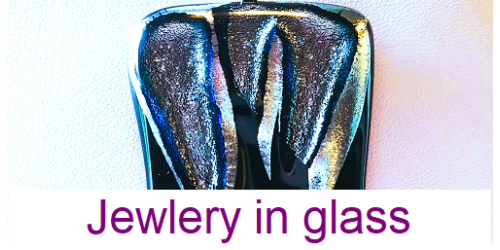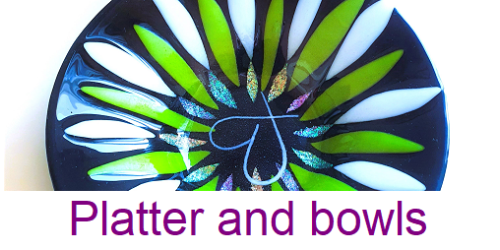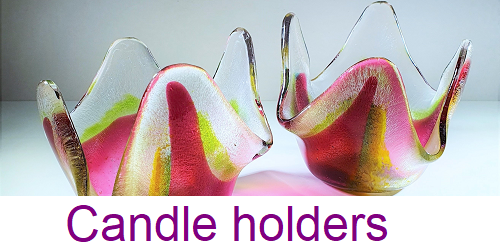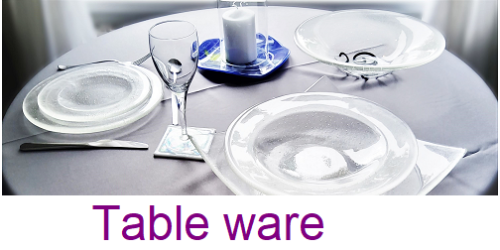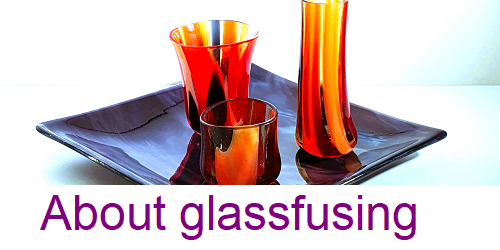About glassfusing





Glassfusing is a technique to melt cut glass sheets in different patterns. The form of the final piece is done by slumping in slump forms. Other ways to create glassfused pieces is, for example, to use powder or frits with different shapes and sizes for design or to use so called “freeze and fuse” to receive figurative forms. This guide is an attempt to describe the basics for glassfusing as a hobby and a brief information about how it is done.

Kiln for glassfusing
Glassfusing is carried out at very high temperatures and a kiln is need that can control the temperature with time. There are numerous kinds of kilns on the market and to receive nice glassfused platters and bowls programming is needed with at least 8 or more steps. It is possible to use a kiln with not as many steps for jewelry in glass and minor items. It is, however, needed to be time controlled up to temperatures and reach above 800 degrees C. Below there is an example of temperature diagram for glassfusing. All kilns are different and most often there is a need for tests to gain a temperature diagram for specific kilns.

Diagram 1. Example of schematic temperature diagram for glassfusing.
Every kiln is unique, and tests are needed for each kiln to find out the program for each kiln when glassfusing and slumping are at the best. This takes time and several trials can be needed to test different sizes and thickness of glass.
To avoid cracking and uneven fusing it is to prefer that the glass used for an item have the same COE, Coefficient of expansion. There are several types of fusible glass, for example, common COE values are 90 or 96. Other important factors to avoid cracking are the rate for heating and cooling as well as the annealing time. Slow rates and longer annealing times at 490˚C are for the better.
My choice of material has been to use glass sheets, 2 or 3 mm in thickness, frits, and powder with COE 90. For decoration and glittering I have used dichroic glass.
The glassfusing process is to melt glass and this occurs at the highest temperature in the program. The glass may get stuck on the support unless the support is treated with separator, or a fiber paper is used in between the glass and the support. The slump forms are also treated with separator to avoid the glass to get stuck at the slumping process.
The following steps may be followed in the glassfusing process:
- Glasscutting is carried out with a cutter with a head of diamant. Oil is used as a medium when cutting the glass for best results.
- The art work is the cutting into a composition, which can always be varied and be developed.
- When the composition is ready, it is set into the kiln for fusing.
- The temperture is then increased in a controlled way and a full fuse is commonly carried out above 800 °C.
- Then a controlled cooling is submitted to the piece of glass. The cooling step also contains an annealing step for the glass to recieve the correct structure of the glasswork.

FAQ, Frequently asked questions
Below some qestions and answers are presented about the products.
- Is it possible for me to determine an exact design?
Answer: The fusing causes the glass to melt in different ways and the pattern on the design can change from one time to another time in the kiln.
- Is it possible to have different thicknesses on the design after fusing?
Answer: The fusing thrives to 7 mm in thickness independent of how may layers of glass in the design. The results will be either larger or a less sized plate.
- Can I get any form on my design?
Answer: The design is formed in a slump for to get a final shape. This is carried out by letting the material fall into a form. This form determine the shape.
- The hanger is broken on my jewlery, can I repair it?
Answer: It is possible to use glue to repair the hanger.
- What is silver 925?
Answer: Sterlingsilver is an alloy consisting of 92.5 % (925/100) silver. The resti is mainly copper and in some cases zink.
- Is it possible to use the dishwasher to glassfused items?
Answer: Please, handwash the glassfused items.
- Is it possible to use glassfused items for food?
Answer: Iversen Glasfusat always use a transparent top sheet without colour on all product surfaces for food items to be safe.
There are no products to list in this category.

